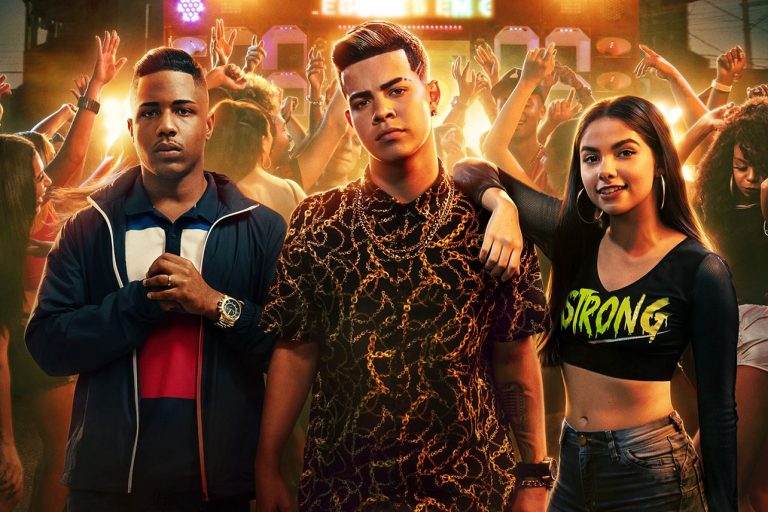
Sintonia
04 May, 2020This review contains some spoilers
The plot of Sintonia, a Netflix series directed by director, film-maker and producer Konrad Dantas (KondZilla), creator of one of the most popular YouTube channels in the world, is set in the reality of Brazil’s peripheries (favelas). Well, it is almost the reality. The script follows the saga of friends Doni (MC Jottapê), Rita (Bruna Mascarenhas) and Nando (Christian Malheiros), who have in common the dream of becoming famous using baile funk, one of the urban genres most consumed by young people in Brazil’s favelas. But each one follows the path in their own way. Despite the different choices, they stay as friends and help each other along the way.
Despite some clichés, the six episodes of the first season portray the daily lives of those who live on the margins of society very well. It is a fact that it also reinforces the structural racism that exists in Brazil. This is evident mainly in the choice of actors who play drug dealers, gang bosses, criminals and one of the supporting actors, Jussara (Rosana Maris), who is violent and has connections in crime. They are all black people. Another example is one of the protagonists, black, going to crime and being an early father, even though he has vision and talent for business. The white boy (Doni), on the other hand, has a good life because of his father’s local business, structured family and good studies. Not that it doesn’t happen yet. However, if the roles were reversed it would also be true. The same is true of the influence of the Christian church in communities.
Sintonia shows how different institutions can directly interfere in the life of a young man from the periphery: culture and art, criminal gangs and the Christian religion. In many cases, it is only possible to have social recognition by being part of one of them. The series, which has earnt itself a second season, also exposes the governmental neglect (of the poorest), violence and police corruption. This is an immersion in the suburban culture of São Paulo (of “quebrada”), with its styles, languages and parties (the baile funk or fluxos) and behind the scenes of funk, a financial phenomenon in the music industry in Brazil.
As expected, the series was one of the most watched in Brazil. It drew attention, as it spoke directly to its target audience. Many people identified with the characters and their struggles. They were expecting to know what will happen in the second season: did Rita go to church just to take a hit and embezzle money or did she really become a christian? Will Doni be able to maintain his career in funk? Will Nando leave crime and dedicate himself to the funk business?
It is obvious that in the midst of praise controversies will also appear. Some of these came from Nelson Motta (journalist, writer, producer), who in his review in the newspaper O Globo, said that “the ugly is the new beautiful through the lens of KondZilla and Johnny Araújo”, referring to its aesthetics, its location in peripheral neighbourhoods and the actors, some of them ex-prisoners. Although ‘positive’, the words were not well received because they were perceived as discriminatory. Mídia Ninja (independent media network) responded by stressing the importance of the themes addressed in the series and the inclusion of people in the cast who are themselves on the sidelines. The reality is that Sintonia has become an essential work to show the real Brazil, without romanticism.
Sintonia is available on Netflix
Follow Sounds and Colours: Facebook / Twitter / Instagram / Mixcloud / Soundcloud / Bandcamp
Subscribe to the Sounds and Colours Newsletter for regular updates, news and competitions bringing the best of Latin American culture direct to your Inbox.

